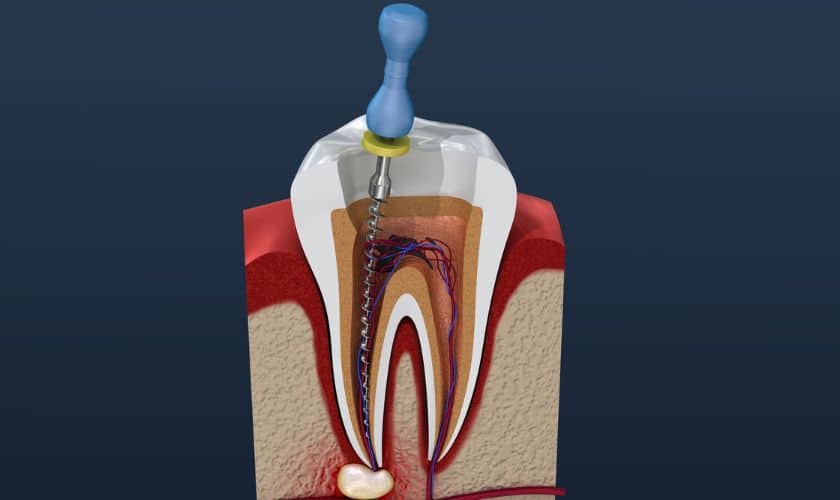
Signs You May Need a Root Canal – Symptoms Not to Ignore
A smile can say a thousand words, but what happens when discomfort lurks behind those pearly whites? Toothaches are not to be taken lightly, and there’s one dental procedure that often comes to the rescue – the root canal. While the mere mention might send shivers down your spine, understanding the signs that may lead to this intervention is crucial. In this blog, we’ll shed light on the potential oral health signs to look for if you need root canal therapy.
Signs You May Need a Root Canal
Persistent Toothache
One of the primary signs is a toothache that doesn’t go away. If you’re experiencing a constant throbbing pain in your tooth, it might be a signal that the pulp inside is infected.
Sensitivity to Temperature
Feeling a sharp twinge or lingering discomfort when you eat or drink something hot or cold can indicate nerve damage. If this sensitivity persists, a root canal might be in order.
Swollen Gums
Keep an eye on swollen or tender gums around a specific tooth. If there’s a pimple-like bump on your gums, it could be a dental abscess. Also, it could be a clear sign of infection that may require a root canal.
Discoloration of the Tooth
If your tooth starts to change color, turning darker or grayer, it’s a potential red flag. This discoloration suggests damage to the blood vessels in the tooth pulp, and a root canal might be necessary.
Painful Chewing
Feeling pain or discomfort while chewing can be an indication of an issue within the tooth. It could mean that the pulp is compromised, and a root canal could help resolve the problem.
Prolonged Pain Relief After Removal
If you’ve had a tooth extracted and experienced relief, but the pain comes back, it could be a sign of problems with neighboring teeth. Also, this might be a problem in the roots of the extracted tooth. Such a situation requires attention through a root canal.
Cracked or Chipped Teeth
Cracks or chips in your teeth can create openings for bacteria to penetrate, reaching the tooth pulp. Addressing these issues promptly with a root canal can prevent further complications.
Foul Taste in the Mouth
An unpleasant taste in your mouth, especially if it’s persistent, may indicate an infection in the tooth pulp. A root canal can eliminate the source of the infection, resolving the taste issue.
Why Ignoring Symptoms Isn’t an Option
Risk of Infection Spread
Ignoring symptoms such as persistent toothaches or swollen gums increases the risk of infection spreading beyond the tooth. This can lead to more severe complications. As a result, it affects the surrounding tissues, which potentially causes widespread infection.
Formation of Dental Abscess
Unaddressed dental issues may result in the formation of a dental abscess, a pocket of pus caused by a bacterial infection. Abscesses can be extremely painful and pose a risk of spreading infection to other parts of the body.
Risk of Tooth Loss
Dental infections, when left untreated, can progress to a point where tooth extraction becomes the only viable option. A root canal can prevent the need for extraction, allowing you to retain your natural tooth.
Prevention of Further Dental Procedures
Timely intervention with a root canal can prevent the need for more extensive and invasive dental procedures. Ignoring symptoms may lead to complications that necessitate more complex treatments.
How Root Canal Therapy Can Help
Pain Relief: Root canal therapy is often a go-to solution for persistent toothaches. By removing the infected pulp, the source of the pain is eliminated, providing immediate relief.
Preservation of Natural Tooth: Unlike tooth extraction, which involves removing the entire tooth, a root canal allows for the preservation of the natural tooth. This is crucial for maintaining proper oral function and appearance.
Preventing Spread of Infection: Root canal therapy halts the spread of infection. By cleaning and sealing the tooth, the dentist prevents the bacteria from spreading to surrounding tissues.
Avoiding Tooth Extraction: Root canal therapy can often prevent the need for tooth extraction. Preserving the natural tooth is preferred whenever possible, and a root canal makes this feasible.
Restoration of Tooth Function: After a root canal, the tooth is typically restored with a crown. This not only strengthens the tooth but also restores its functionality. It eventually allows you to bite and chew comfortably.
Improving Overall Oral Health: By addressing the root cause of the problem, root canal therapy contributes to overall oral health. It prevents the persistence of infection, reducing the risk of complications in other parts of the mouth.
Your oral health is a crucial aspect of your overall well-being. Recognizing the signs that may necessitate a root canal is the first step toward maintaining a healthy and pain-free smile. Don’t let the fear of the unknown prevent you from seeking professional dental care. If you’re experiencing any of the symptoms discussed, schedule a visit to your dentist promptly – your teeth will thank you in the long run.





